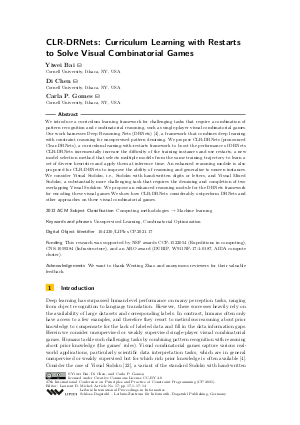LIPIcs.CP.2021.17.pdf
- Filesize: 1.37 MB
- 14 pages

 Creative Commons Attribution 4.0 International license
Creative Commons Attribution 4.0 International license


















Feedback for Dagstuhl Publishing